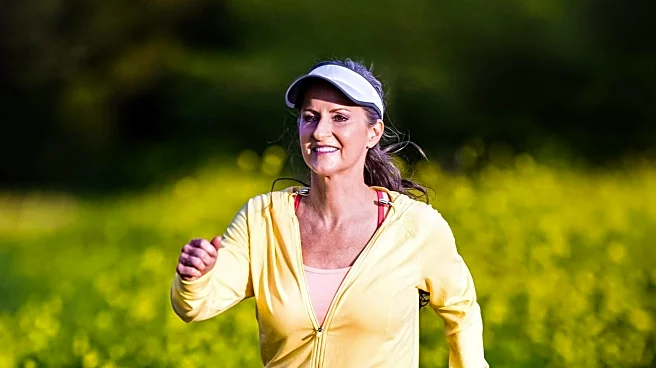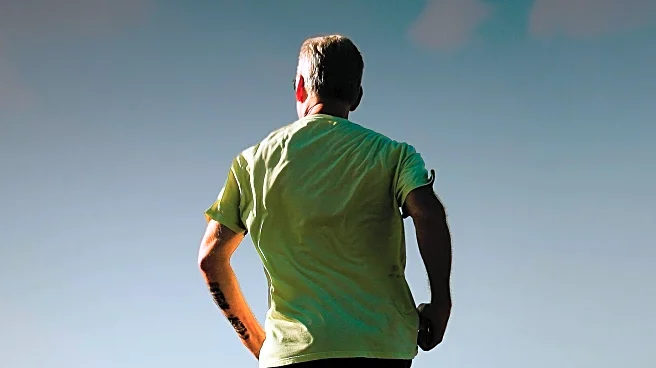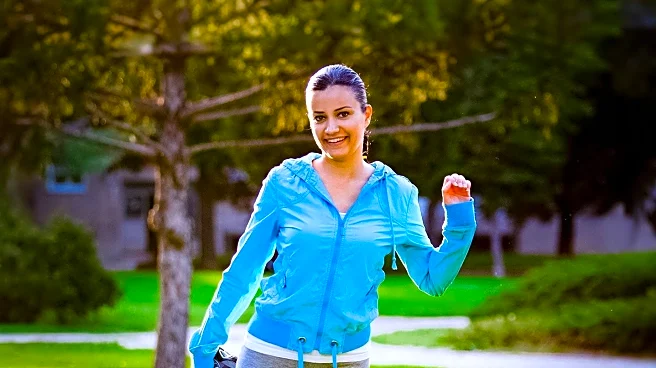What's Happening?
A 70-year-old American cardiologist has emphasized the importance of physical activity as a key factor in achieving healthy aging. The cardiologist recommends incorporating both aerobic and resistance training into regular routines, suggesting at least 150 minutes of moderate intensity or 75 minutes of vigorous exercise weekly. He highlights resistance training as particularly beneficial, noting that it can be done with inexpensive equipment like bands. Recent studies support this approach, indicating that physical activity is crucial for preserving functional independence in older adults, including those who are frail or at risk of falling. Higher levels of physical activity are associated with improvements in cognition, mental health, and quality of life.
Why It's Important?
The emphasis on physical activity for aging populations is significant as it addresses the growing need for strategies to maintain health and independence among older adults. As the U.S. population ages, healthcare systems face increased demand for services related to age-related conditions. Encouraging physical activity can potentially reduce healthcare costs by improving overall health and reducing the incidence of chronic diseases. This approach also supports public health initiatives aimed at promoting active lifestyles to enhance quality of life and mental well-being among seniors.











